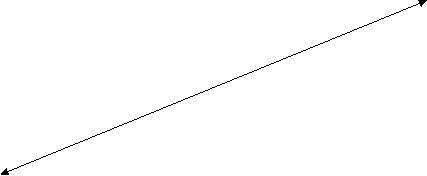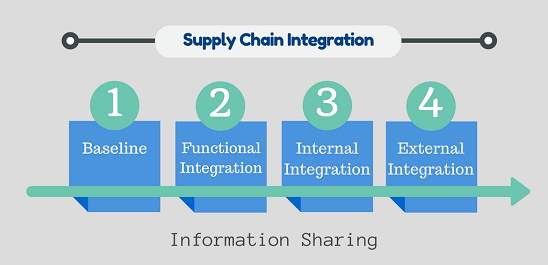Critical Evaluation and Analysis of Supply Chain Management
Info: 5583 words (22 pages) Dissertation
Published: 17th Aug 2021
Table of Content Page Numbers
Executive Summary 3
1.0 Introduction 4
2.0 Overview of Hp Inc. 4
3.0 Literature Review 5
3.1 Outsourcing 5
3.2 Supply chain Management 5
3.3 Supply chain 6
3.4 Suppliers 7
3.5 Supply Chain Integration (SCI) 7
3.6 Supplier Integration 8
3.7 Supply Chain Performance 9
4.0 Hp Business Practises and Strategies Overview 9
4.1 Hp’s Logistics and Supply Chain Management 9
4.2 Hp Current Performance 10
4.3 Climate change 10
4.4 Natural Resources 10
4.5 Society 10
4.6 Integrity 10
5.0 Key Challenges 10
6.0 Current Supply Chain Strategy 11
7.0 Hp Inc. vs. Dell Analysis (Swot Analysis) 12
8.0 Manufacturing Strategy 13
9.0 Suppliers Network Structure 13
10.0 Summary 13
11.0 Conclusion 14
12.0 Recommendation 14
References 15
References 16
Executive Summary
The present movement in manufacturing has driven businesses to outsourcing, collaborating and creating a widespread network of suppliers in order to bring products to clients. Ataseven & Nair (2012) acknowledged supply chain integration rationalizes business development and direct processes which permits businesses to attain competitive advantage. Therefore, the necessity for pivotal businesses to build a relationship with a supplier (Lawson, Squire and Cousins, 2008) and acknowledging its competences as a supplier before integration. After integrating with a supplier, supply chain managers essentially must build a framework as a check on the supply chain as discussed by Christopher (2016).
The analysis is about theories of supply chain management and current evaluations linking to the report.
The result of this report offered a critical evaluation and analysis of supply chain management with the emphasis on upstream incorporation and using Hp Inc. as a case study. Also, the findings gave understanding to why Hp Inc. is a top competitor in the PC manufacturing industry.
Lastly, the report endorses companies to have complete prominence and mature aligning interest by joining procedures with a supplier.
This report is about Hewlett Packard Incorporated and its operations in the Supply Chain Business. The report will conduct a preliminary research about HP Inc. and identify key issues and challenges currently faced by it.
The report will look at the operations of the Suppliers, Distributors and Consumers of the supply chain at Hewlett Packard and figure out how is affected by these challenges. The report will use supply chain management to analyse the issues and challenges and make recommendations.
The report will look at when these challenges occur. The location of Hp Inc. suppliers, their relationship, and strategies used in the supply chain. The types of transport for its distribution and logistics service providers, and look at product risk, vulnerability, robustness, resilience and reverse logistics from the consumer.
According to Hp Inc. (2018) Hewlett Packard Incorporated is a maker of products, machineries, software, resolutions and services to distinct customers, small and medium sized industries and large enterprises. Hp Inc. operates through three business segments: Personal Systems, Printing, and Corporate Investments. It operates across the Americas, Europe, the Middle East, Africa and Asia-Pacific. HP has its headquarters in Palo Alto, California, the US.
Hp Inc. (2018) stated returns of $52,056 million for the fiscal year ended October 2017 an increase of 7.9% over FY2016. In FY2017, Hp’s working boundary was 6.8%, likened to a working boundary of 7.4% in FY2016. In FY2017, the company recorded a net margin of 4.9%, likened to a net margin of 5.2% in FY2016. Hp reported revenues of US$14,586.0 million for the third quarter ended July 2018, an upsurge of 4.2% over the previous quarter.
The reports literature review is about supply chain management with emphasis on supply chain amalgamation.
According to Mangan & Lalwani (2016) outsourcing is when any process or procedure that is usually done in-house by a company’s personnel is sub-contracted to another establishment for an extensive period. The outsourced responsibilities can be done on-site or off-site.
Outsourcing has its several rewards. As detailed by Mangan & Lalwani (2016), there are numerous motives a company would pursue to outsource. For instance, surge flexibility, having access to non-core competence, cost decrease, direct, secondary, principal, taxes along with others to advance performance.
The gathering and management of all the suppliers associated in creating a produce or bringing a service is next to be discussed in supply chain management.
Exploration has come up with varying interpretation to supply chain management but with a common goal. Mangan & Lalwani (2016) claims that it is the management, across and inside a system of upstream and downstream groups, of both dealings and movements of material, data and resources. The significance of Supply Chain Management is to generate value, improve competence, and gratify customers.
Van der Vorst (2004) is of the opinion that supply chain management is the combined preparation, organisation and control of the entire business method and events in the supply chain to deliver quality customer value at a cheap price to the supply chain while fulfilling standards of the other stakeholders in the supply chain.
These connotation spreads to form an international system and upholding the method stream in the supply chain can be thought-provoking. On the contrary, Richards & Grinstead (2016) explained that a suitable supplier association development is an important component in supply chain management. In totalling, distinguishing features of top performing supply chains are the goals of companies in having an advantage over their opponents (Mangan and Lalwani, 2016).
Correspondingly, Lindgreen et al., (2013) recommended that a supply chain manager needs to distinguish and concentrate suppliers that are mainly pivotal to the overall advantage of the company. A supportive view from Tseng (2014) said developing a strategic long-term association helps uphold anticipated performance that will impact competitive advantage.
Mangan & Lalwani (2016) acknowledged the inclination in competitive advantage. To succeed in this area. The supply chain should be able to provide the right product, at the right product at the right price, to the right customer, in the right condition, at the right time and right quantity, have witnessed supply chain links of global enterprises, occasionally develop issues upsetting supply chain performance.
An example is a late delivery to the final customer or the production lead time. In the direction of which Muhammed (2018) dubbed the framework of dealing with the diverse suppliers as Suppliers Relationship Management (SRM). According to Webb (2017) SRM is basically the course for establishments shaping the supply groups that are significant and creating the tactics that bring about these matters in a smart fashion. SRM offer superior stages of innovation, improve value to a produce based on demand and progresses supply chain performance. Below is an illustration of Supply chain value flow.
According to Rajgopal (2016) supply chain is the gathering of procedures and possessions essential to manufacturer and deliver a produce to the ultimate purchaser. This view is supported by Janvier-James (2012) and defines Supply Chain as planned manufacturing procedure in which raw resources are changed into complete goods, then brought to the end consumer. Rajgopal (2016) has established that supply chain has three unified parts and below is a diagrammatic illustration.
Fig 1.

Internal supply chain








Customers
Suppliers
Distribution
Production
Purchasing



- Upstream, where obtaining or gaining from outside suppliers occurs.
- Midstream or Internal, where manufacturing or assemblage happens.
- Downstream, when distribution regularly by outside distributors and sales to the purchaser happens.
According to Mangan and Lalwani (2016) supply chain has various activities such as transport, warehousing, purchasing, marketing and finance.
According to International trade (2018) suppliers are the party providing goods or services in a commercial deal in exchange for the agreed financial value. An explanation from Rajgopal, (2016) states that suppliers are the upstream of the supply chain.
The diagrammatic illustration above gives a perception to how supply chain relationships are shaped to generate competitive advantage, the requirement to hand-pick the correct associates and manage suppliers’ relationship to enhance performance.
Below is a review relating concepts on how to bring into line and manage with nominated suppliers to take full advantage of supply chain performance.
3.5 Supply Chain Integration (SCI)
Supply Chain Integration is the extent a principal company work together with their suppliers to successfully manage all procedures in generating value for goods and services to the final consumer (Flynn, Huo and Zhao, 2010). This is supported by Mangan, Lalwani, Butcher & Javadpour (2013) that supply chain integration represents numerous communication networks and associations inside the supply system.
Though, Mangan & Lalwani (2016) stressed that supply chain integration signifies influences within the supply system, also ought not be misguided for collaboration. They additionally clarified the variance among integration and collaboration by asserting, the former brings into line and inserts the business events and the latter progresses their association over a long period.
Correspondingly, Huo (2012) announced that supply chain integration is practical in the upstream and downstream since the principal company together with the integrative proficiencies are force aimed at an organizational general performance.
Fig 2.
Benjabutr (2018) illustrates with a diagrammatic representation of SCI

This report will emphasis on incorporation upstream of the supply chain. This is followed by the frame work evaluation of supplier integration definition, the expediency of it to reach optimal performance and reason supplier’s prominence is analytical for a meaningful integration.
According to Petersen, Handfield and Ragatz (2005) many organisations are in quest to reduce perception to customer development time, enhance class, decrease the price of new products and enable the plane introduction of new products. Investigations have shown that the incorporation of material suppliers into the new product development (NPD) sequence may deliver significant benefits near realising these goals. This participation can range from modest discussion with suppliers on design concepts to making suppliers entirely accountable for the design of mechanisms or schemes they will supply. In this instant supplier’s essentially must share information and may work together towards attaining the reason for the integration.
Huo (2012) states that internal integration progresses external integration besides internal and external integration directly and indirectly improves company output. Additionally, complete or fractional mediating effects between SCI and company output are recognised.
Ataseven and Nair (2017) assets a prove of trust and confidence is built when key suppliers operations are linked to their internal operations and external demand.
This suggests that the upstream combination firmly influence the supply chain and achieve best performance, supplier’s prominence must be total, and visibility must cover the degree of combined links. An example is the principal establishment to their first Tiers.
This was confirmed that present company’s supply chain essentially should be Lean, Agile, Robust and Sustainable in order to be modest in their individual markets. It also disclosed the intricate difficulties in choosing the right preparation to implement and gauges to calculate supply chain output (Cabral, Grilo and Cruz-Machado, 2012).
The analyses and evaluation of current supply chain performance at Hp Inc. Piotrowicz and Cuthbertson (2011) states that supply chain performance measurement is a setting‐independent process, personalised to precise supply chain necessities. To comprehend in what way a performance dimension system in a supply chain has been established and used, it necessitates to apprehend its setting, process and content.
The investigation exposed numerous writers highlighting thoughtfulness relating to the supply chain performance. This is due to composite issues thought of in attempts to designing a background for calculating performance. As illustrated by Sillanpaa (2010) voiced that an establishment engages numerous actions to find their performance in the sale places nonetheless there are lesser scopes more important than others summing the overall performance. In this instance, the outcome of upstream combination that yields in swiftness of executions and lower price in manufacturing may be a vital performance factor in general.
4.0 Hp Business Practises and Strategies Overview
Specific roles across the business initiative is a distributed approach, fetching in traditions that remain utmost importance to the aims and actions. These comprises of corporations, patronages, partnership on business initiatives, buyer and supplier instruction, supplier abled structuring agendas, supplier reviews and valuations, session contribution, worker reviews, mentoring and others. Hp Inc. finds suitable stakeholders built on reasons such as skill, readiness to cooperate, status, site, and scope of effect (hp.com, 2017).
4.1 Hp’s Logistics and Supply Chain Management
Hp use a momentous quantity of outsourced manufacturers (“OMs”) around the globe to produce HP-designed products. The usage of OMs is planned to create cost competences and decrease time to market for HP designed goods. It uses multiple OMs to preserve flexibility in its supply chain and manufacturing procedures. Occasionally, third-party suppliers manufacture goods that are bought and resold with HP brand. In addition to the use of OMs, in some occasions, limited number of products have been manufactured by Hp for their use instead of awaiting from third party suppliers (hp.com, 2017).
Hp practises Leagile methods of satisfying customers request for products, The reason is that Hp produce products to order to exploit industrial and logistics competences by manufacturing high bulks of elementary product formations. Otherwise, arranging products to order allows units to fit a client’s hardware and software modification supplies (hp.com, 2017).
Hp stock administration and distribution practices in both construction products to order and organising products to order pursue to lessen stock holding phases by taking hold of the inventory and producing it soon before the sale or distribution of goods to the client (hp.com, 2017).
According to hp.com (2017) Hp tactic to sustainability extends to a comprehensive array of sustainability matters made up of three columns: environment, society and integrity. It ranks matters to solve built on their comparative status to Hp’s culture, commercial achievement and sustainable progress and long-term sustainable goals.
- Use hundred percent renewable electricity in Hp global processes, with a provisional achievement of forty percent by 2020 (hp.com, 2017).
- Attain zero deforestation related with HP product paper and paper-based product wrapping which includes the box that comes with the product and all paper inside the case by 2020 (hp.com, 2017).
- Society
- Progress skills and advance well-being of five hundred thousand plant employees by 2025, from the commencement of 2015 (hp.com, 2017).
- Preserve larger than ninety nine percent achievement rate of Ethics of Professional Conduct training amongst regular HP staffs and the Board of Executives (hp.com, 2017).
Hp had constructed a supply chain visualization instrument in answer to receiving an improved grip on how to place supply chain visualization tool, such as straight ship actions. At the period, HP had perceptibility into their supply chain, but it needed the speed to link an occurrence to the system and retort properly. Fundamentally, it could realise an incident was happening, but remained incapable to make variations to their system to mitigate the harm. Hp knew what to do nonetheless could not get the material fast enough (LLamasoft, 2016).
Though HP was in preparation to solve the speed issue, it also experienced an increase in interruptions. Hp noticed that climate associated issues have increased pointedly in current years. Since Hp was running lean, these interruptions made the hazard worse. The team took the visualization database and merged a risk management layer (LLamasoft, 2016). This then resolved the challenges faced.
6.0 Current Supply Chain Strategy
According to (LLamasoft, 2016) HP provides challenging material from third party data bases into the tool. Forecasters screen and assess whether the challenge will influence the supply chain. The main threat for HP is the data it comprises of a complete customary of information of manufacturers and suppliers but have lapses. Hp is very poised with the information they have for Tier 1 suppliers, but then throws up challenges when it is detailed, the exactness becomes very challenging. This data is a link between HP manufacturing locations and suppliers that gives feedback to Hp regarding a disruption for products they vend straight to consumers.
Coming from HP, it practices two key subscription bases for data threats, namely NC4 for supply chain interruptions and Anvil for travel and security. The main types of interruptions Hp surveys are natural tragedies, legal and financial interruptions, infrastructure, health, and social and political discontent. An instant is a natural disaster like an earthquake, HP can plot the challenge to calculate the rudimentary radius of effect, and location contacts for a status update(LLamasoft, 2016).
7.0 Hp Inc. vs. Dell Analysis (Swot Analysis)
This unit will prove a contrast in supply chain management of Hp Inc. strength, weaknesses, opportunities and threats with that of its competitor, Dell.
Hp manufacturing strategy is Leagile and it is current with decoupling plants situated in tactical topographical areas, which additionally spreads the supply chain and regulator to some degree over the system (Das, 2018). Similarly, manufacturing cost and lead time are short due to mass customisation. Deferred configuration as a manufacture idea, lessens the capability to offer the client a vigorous product customisation (Mangan and Lalwani, 2016).
Dell engineering is lean with the method of a pull manufacture viewpoint and mostly outsource engineering of most mechanisms (Magretta, 1998). Dell’s customisation service proposes client’s product outline made-to-order to their supplies. Moreover, this approach is expensive to build to order service and extensive lead time (Mangan and Lalwani, 2016).
9.0 Suppliers Network Structure
Mangan and Lalwani, (2016) description of the assemblies of supply chain means Hp Inc. worldwide supply chain is extra widespread since it has clients in the America’s, Europe, the Middle East, Africa and Asia-Pacific. Even if, a widespread supply chain reduces supplier’s perceptibility. Hp’s supply chain is mix with the emphasis on agility.
Dell’s worldwide system is not far a success but tactically in settings bordering to their suppliers which gives more control. Moreover, Dell’s suppliers’ obtaining method is founded on partnership, that bring into line goals and suppliers’ presence (Dell, 2017).
In summary, outsourcing permits industries to give clients improved products during manufacturing, and this may involve global suppliers. This connection creates a chain of suppliers and the supervision of all the suppliers that emerge to manufacture or provide a service is termed supply chain management. Many management systems may come together to help a continuous stream of the association in supply chain and to which quality goods and services are made and distributed to the client. Amongst one such practise is supply chain integration, this emboldens the supply chain due to the integration functions. Also, there are recommended means of measuring the effectiveness of the supply chain and its benefits to the company.
The report has established an investigation to the supply chain management concepts with an emphasis on upstream supplier integration.
It demonstrated numerous motives for current establishment turning to supply chain strategy to advance in competitive benefit.
The result of this report offered a critical evaluation and analysis of supply chain management with the emphasis on upstream incorporation and using Hp Inc. as a case study. Also, the findings gave understanding to why Hp Inc. is a top competitor in the PC manufacturing industry.
Additionally, supply chain managers must be tactically abreast with the tool to be suitable to realise supreme performance.
Outsourcers and Outsources must grow a better supply chain connection. Lastly, the report endorses companies to have complete prominence and mature aligning interest by joining procedures with a supplier.
References
Ataseven, C. and Nair, A. (2017) ‘Assessment of supply chain integration and performance relationships: A meta-analytic investigation of the literature’, International Journal of Production Economics, 185, pp. 252–265. doi: 10.1016/j.ijpe.2017.01.007.
Benjabutr, B. (2018) ‘Supply Chain Integration: Definition, Model and Examples’. Available at: https://www.supplychainopz.com/2013/09/supply-chain-integration.html (Accessed: 5 November 2018).
Cabral, I., Grilo, A. and Cruz-Machado, V. (2012) ‘A decision-making model for Lean, Agile, Resilient and Green supply chain management’, International Journal of Production Research, 50(17), pp. 4830–4845. doi: 10.1080/00207543.2012.657970.
Das, D. (2018) ‘Sustainable supply chain management in Indian organisations: an empirical investigation’, International Journal of Production Research, 56(17), pp. 5776–5794. doi: 10.1080/00207543.2017.1421326.
Dell (2017) Your success is our success. Available at: https://www.delltechnologies.com/en-gb/annual-report/2017/index.htm (Accessed: 8 November 2018).
Hp Inc (2018) Supply chain | HP® Official Site. Available at: http://www8.hp.com/us/en/hp-information/global-citizenship/society/supplychain.html (Accessed: 10 October 2018).
hp.com (2017) ‘HP 2017 Sustainable Impact Report’, p. 137.
Huo, B. (2012) ‘The impact of supply chain integration on company performance: an organizational capability perspective’, Supply Chain Management: An International Journal, 17(6), pp. 596–610. doi: 10.1108/13598541211269210.
International trade (2018) ‘What is Supplier? Definition and meaning’, Dictionary of International Trade. Available at: https://www.globalnegotiator.com/international-trade/dictionary/supplier/ (Accessed: 3 November 2018).
Janvier-james, A. M. (2012) A New Introduction to Supply Chains and Supply Chain Management: Definitions and Theories Perspective.
Lawson, B., Squire, B. and Cousins, P. D. (2008) ‘Performance measurement in strategic buyer‐supplier relationships: The mediating role of socialization mechanisms’, International Journal of Operations & Production Management, 28(3), pp. 238–258. doi: 10.1108/01443570810856170.
LLamasoft (2016) ‘Hewlett-Packard: Using Network Visualization to Mitigate Supply Chain Risks’, LLamasoft. Available at: https://www.llamasoft.com/hewlett-packard-using-network-visualization-mitigate-supply-chain-risks-case-study/ (Accessed: 8 November 2018).
Muhammed, A. (2018) ‘Srm Presentation’. Available at: https://www.slideshare.net/mammii/srm-presentation (Accessed: 4 November 2018).
Petersen, K. J., Handfield, R. B. and Ragatz, G. L. (2005) ‘Supplier integration into new product development: coordinating product, process and supply chain design’, Journal of Operations Management. (Coordinating Product Design, Process Design and Supply Chain Design Decisions), 23(3), pp. 371–388. doi: 10.1016/j.jom.2004.07.009.
Piotrowicz, W. and Cuthbertson, R. (2011) ‘Performance measurement systems in supply chains: A framework for contextual analysis’, International Journal of Productivity and Performance Management, 60(6), pp. 583–602. doi: 10.1108/17410401111150760.
Rajgopal, J. (2016) ‘Supply Chains: Definitions & Basic Concepts’, p. 32.
Sillanpää, I. (2010) ‘Supply chain performance measurement in the manufacturing industry A single case study research to develop a supply chain performance measurement framework’, p. 184.
Van der Vorst, J. (2004) ‘Supply Chain Management: theory and practices’, Bridging Theory and Practice.
Webb, J. (2017) What Is Supplier Relationship Management?, Forbes. Available at: https://www.forbes.com/sites/jwebb/2017/02/21/what-is-supplier-relationship-management/ (Accessed: 4 November 2018).
Cite This Work
To export a reference to this article please select a referencing stye below:
Related Services
View allRelated Content
All TagsContent relating to: "Supply Chain"
A Supply Chain is a system in place between companies and their suppliers, from producing a product to distributing it ready to be sold. An effective and smooth running supply chain can contribute to the successful running of a business.
Related Articles
DMCA / Removal Request
If you are the original writer of this dissertation and no longer wish to have your work published on the UKDiss.com website then please:




